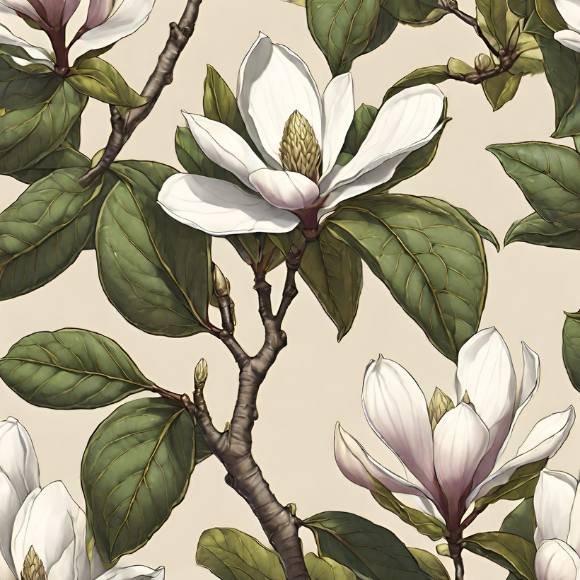
Overview
The Sweetbay Magnolia, scientifically known as Magnolia virginiana, is an elegant evergreen or semi-evergreen tree native to the southeastern United States. Valued for its fragrant blossoms, glossy foliage, and adaptability to various landscapes, this magnolia variety is a popular choice for gardens and natural settings. This plant profile provides insights into the soil, sun, and watering requirements, along with the recommended hardiness zones for cultivating the Sweetbay Magnolia.
Description
Flowers: Sweetbay Magnolia produces creamy-white, lemon-scented flowers with a waxy texture. The blossoms appear in late Spring to early Summer, providing a delightful fragrance and attracting pollinators like bees and butterflies.
Foliage: The foliage of Sweetbay Magnolia is characterized by glossy, dark green leaves with a silver underside. In some regions, the tree retains its leaves throughout the Winter, contributing to its semi-evergreen nature.
Size: Depending on the specific cultivar and growing conditions, Sweetbay Magnolia can reach heights of 10 to 60 feet, with a spread of 10 to 35 feet. Its size makes it suitable for various garden settings, including as a focal point or an attractive screen.
Soil Requirements: Sweetbay Magnolia thrives in well-drained, slightly acidic to neutral soil. The ideal pH range is between 5.5 and 7.0. While it can tolerate a range of soil types, including loam, clay, and sandy soils, ensuring good drainage is crucial. Adding organic matter, such as compost, to the soil enhances fertility and moisture retention, creating an optimal growing environment for Sweetbay Magnolia.
Sun Requirements: This magnolia variety performs well in partial to full sunlight. Providing Sweetbay Magnolia with at least four to six hours of direct sunlight each day encourages healthy growth, abundant flowering, and the development of glossy foliage. While it can tolerate partial shade, exposure to sunlight is beneficial for the tree’s overall vitality and flowering.
Watering Needs: Sweetbay Magnolias prefer consistently moist soil. Regular watering is essential, especially during dry spells or the growing season, to promote healthy growth and flowering. It’s important to ensure that the soil remains evenly moist but not waterlogged, as excessive moisture can lead to root rot.
Hardiness Zones: Sweetbay Magnolias are well-suited for cultivation in USDA hardiness zones 5 to 10. This broad range encompasses a variety of climates, from the colder Winters of zone 5 to the milder temperatures of zone 10. In these zones, Sweetbay Magnolias exhibit optimal growth and resilience, adapting well to the diverse environmental conditions found in different regions.
Zone 5: In colder regions within its hardiness range, Sweetbay Magnolias may experience some Winter dieback, but they generally rebound well in the Spring.
Zones 6-10: Sweetbay Magnolias thrive in these zones, provided they receive the appropriate soil conditions, sunlight, and watering practices.
Maintenance
Pruning: Sweetbay Magnolias generally require minimal pruning. Remove any dead or damaged branches in late Winter or early Spring to encourage a tidy and well-shaped appearance. Light pruning can be done after flowering to maintain the tree’s form.
Fertilization: Mature Sweetbay Magnolias typically do not require extensive fertilization. However, applying a balanced, slow-release fertilizer in early Spring can provide a nutrient boost for healthy growth and flowering.
Mulching: Applying a layer of organic mulch around the base helps conserve soil moisture, suppress weeds, and regulate soil temperature, contributing to the overall well-being of Sweetbay Magnolias.
The Sweetbay Magnolia, with its fragrant flowers and glossy foliage, is a versatile and attractive addition to gardens of various sizes. By understanding and meeting its specific soil, sun, and watering requirements, gardeners can cultivate a thriving Sweetbay Magnolia that can become a beautiful focal point of the landscape.


 Previous
Previous

